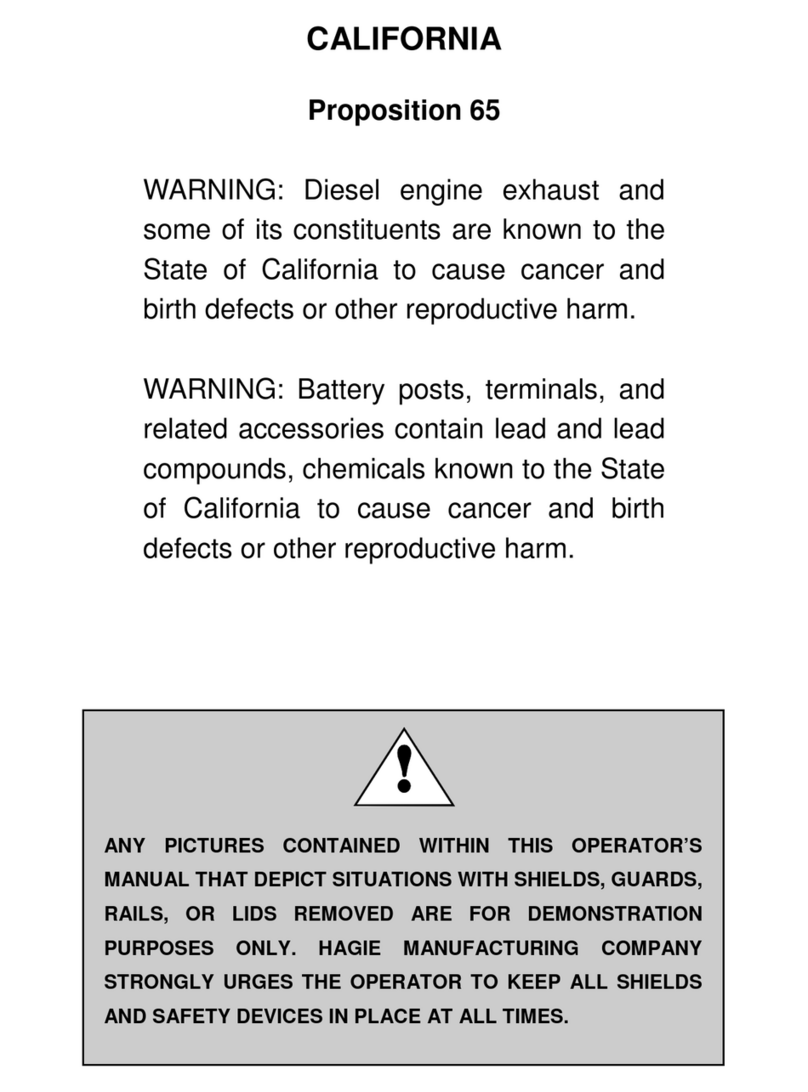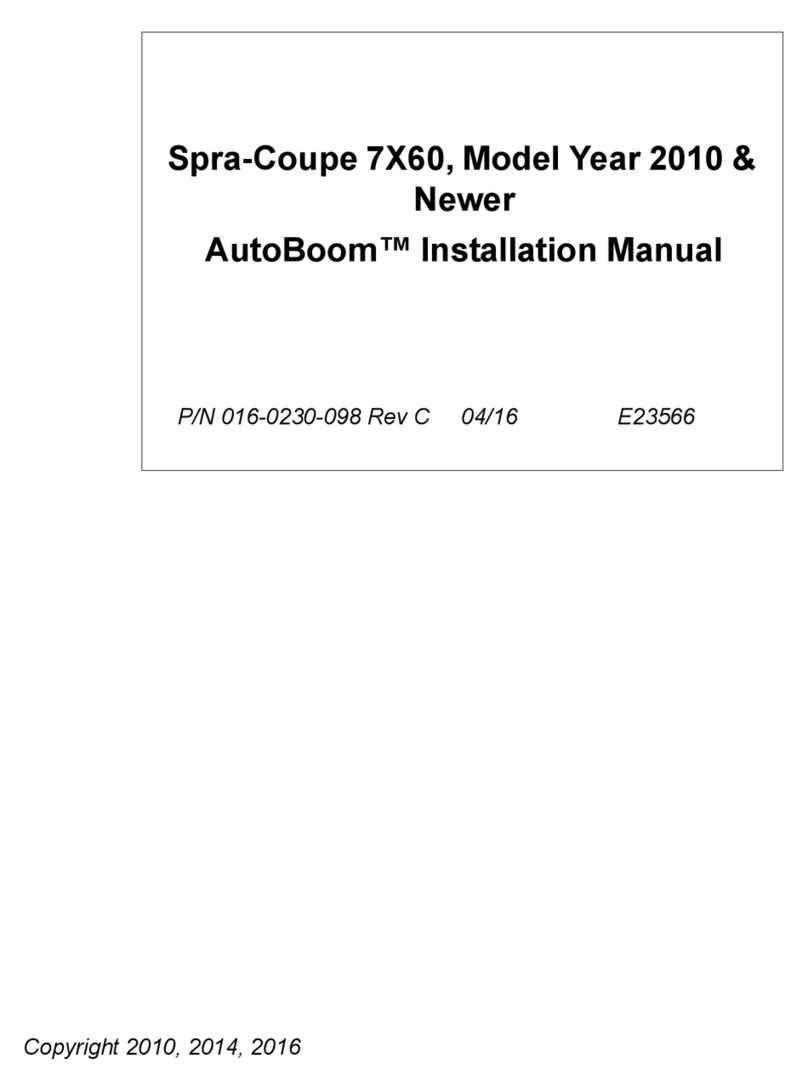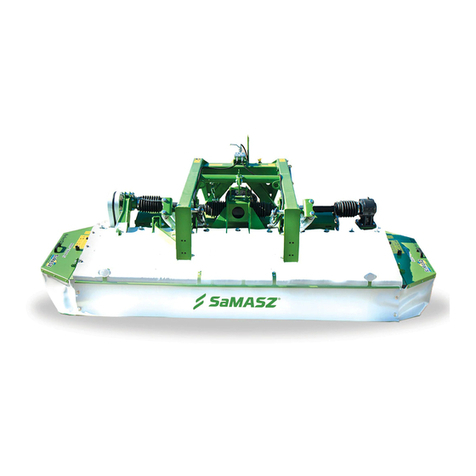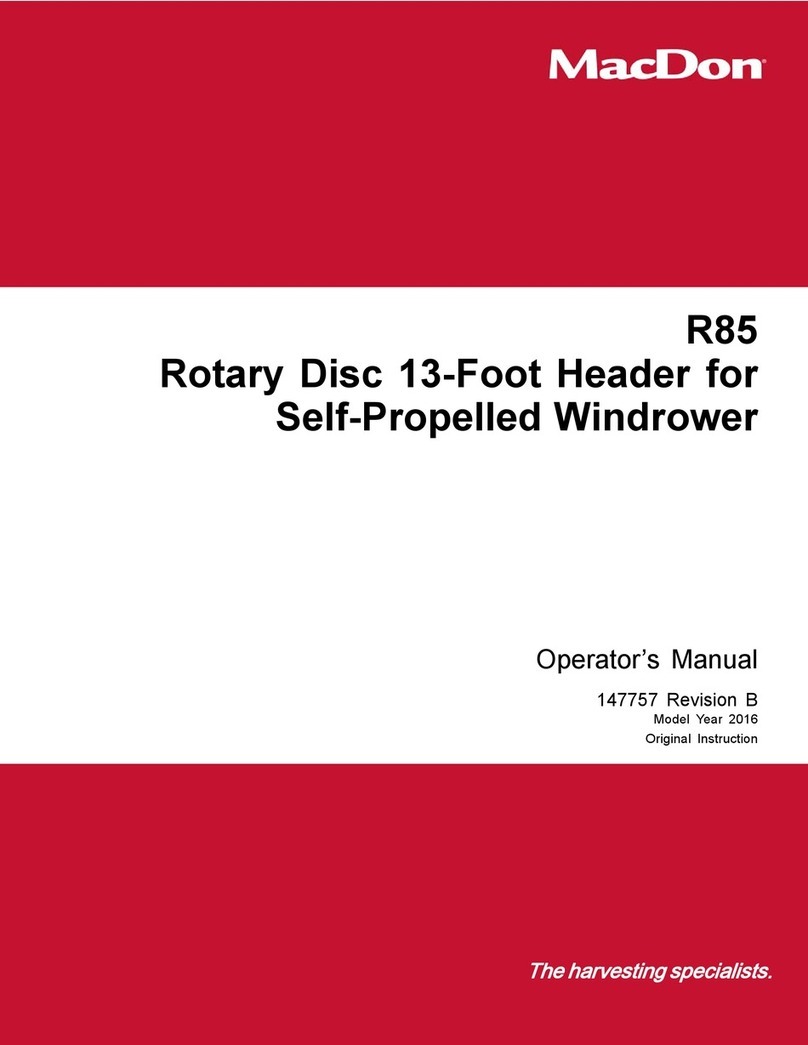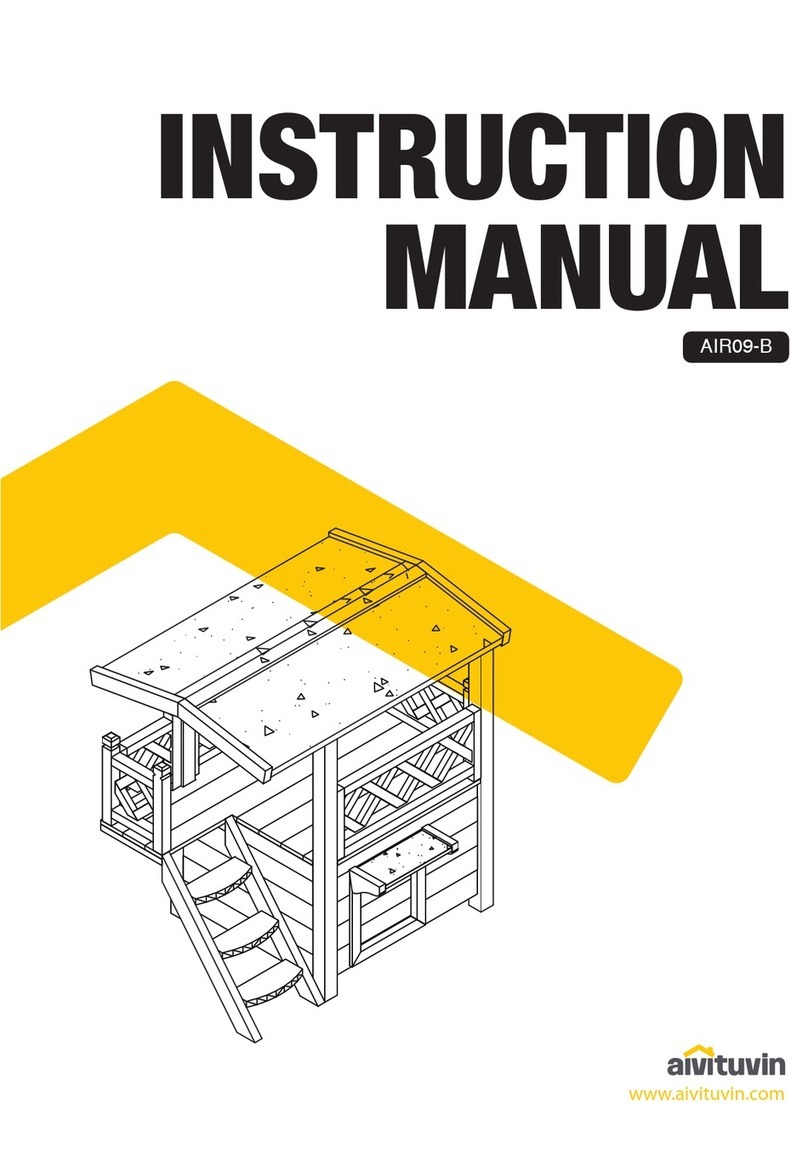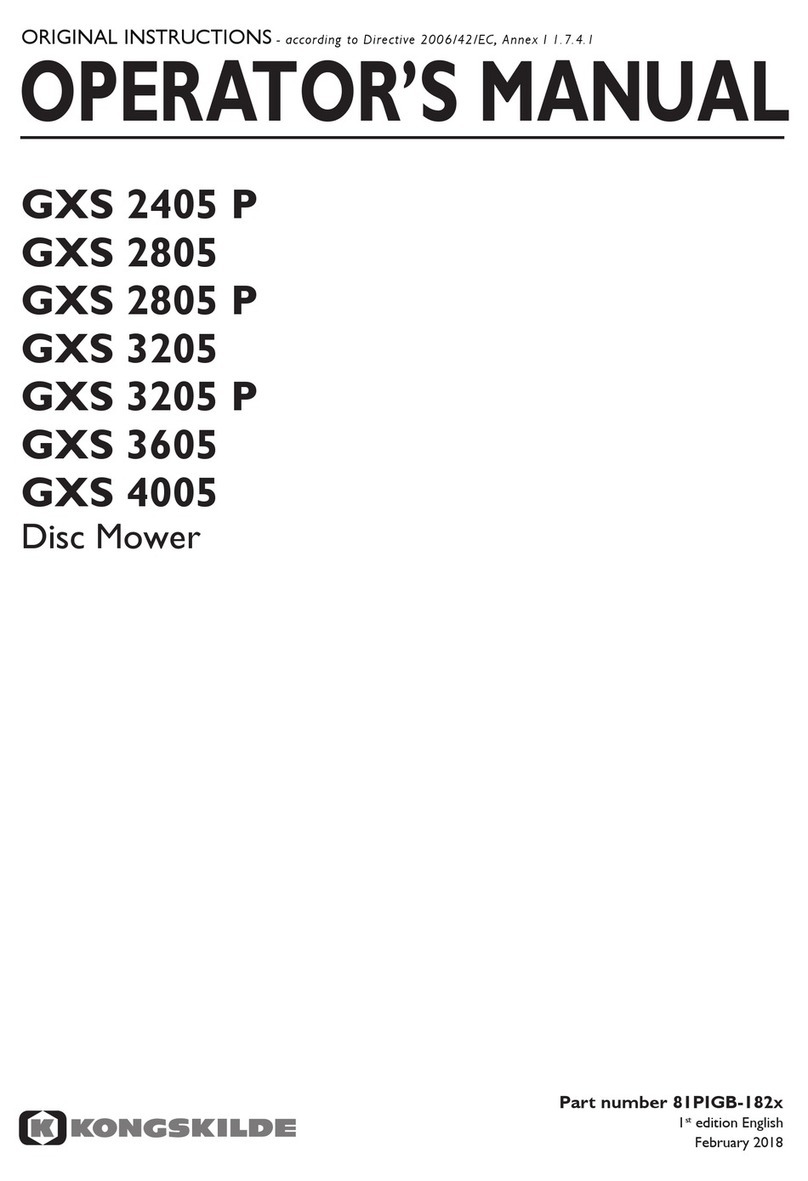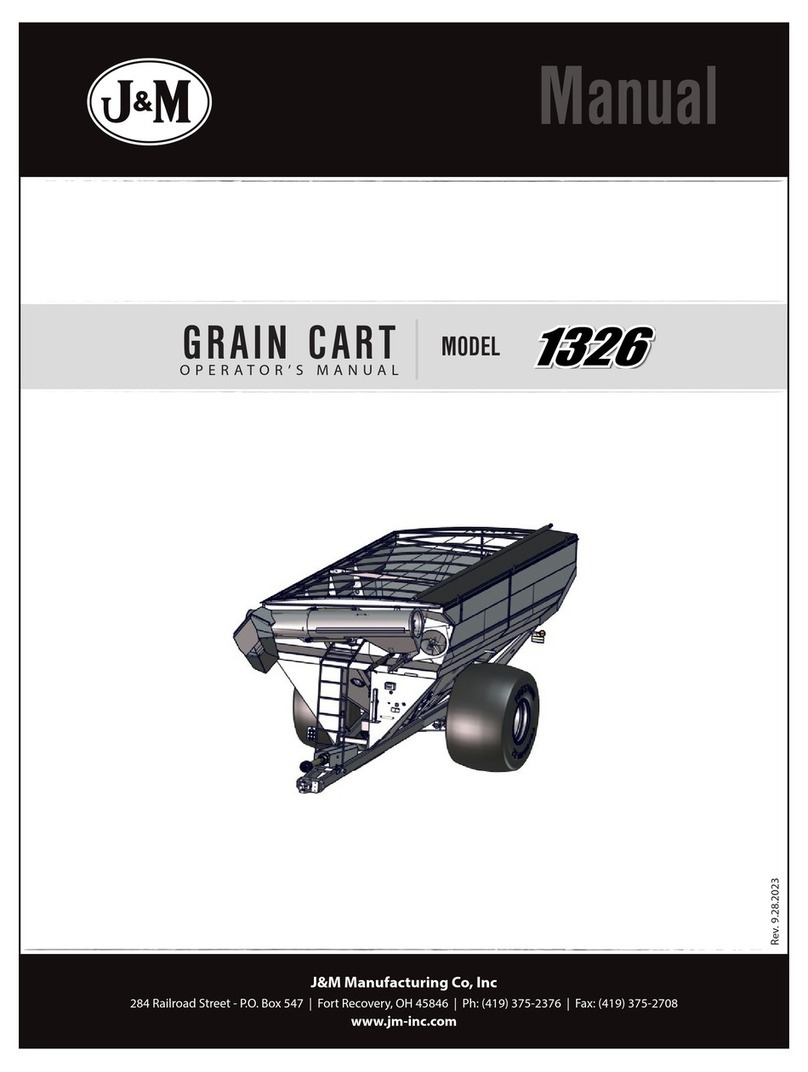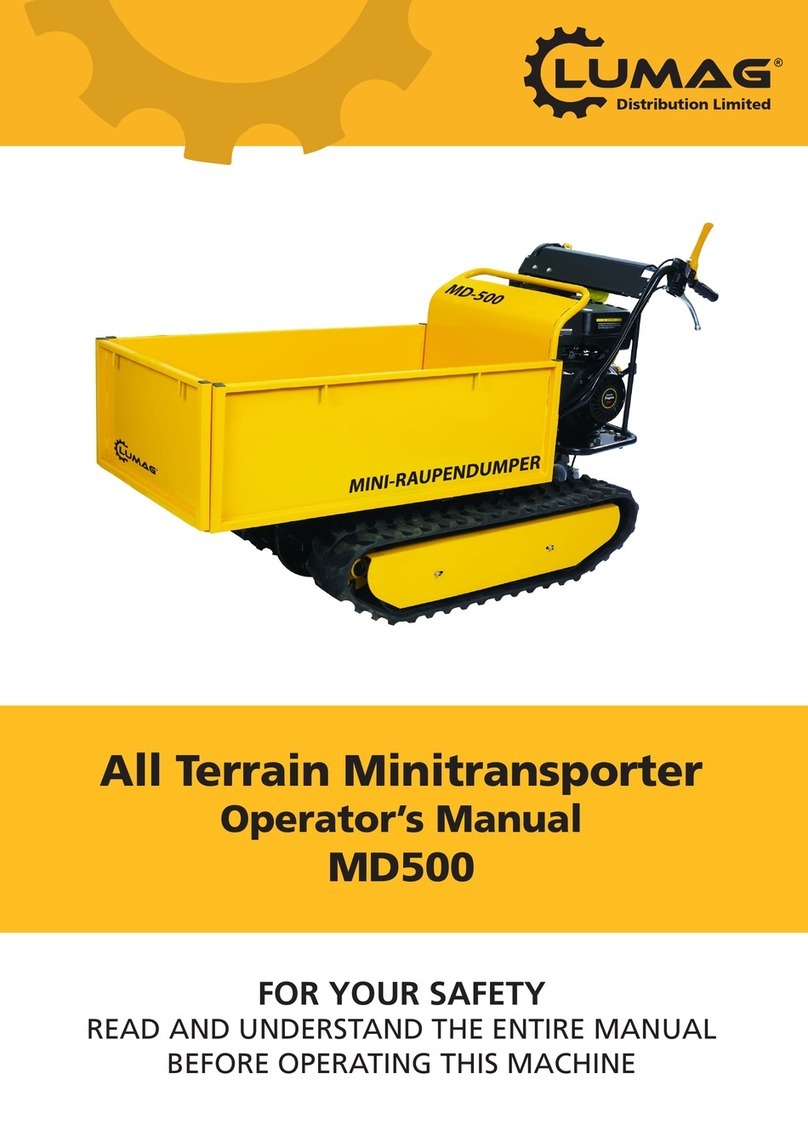Horizon Fitness DSX 40 User manual

Operators Manual
DSX 40/48/50/60/64/72/75
Keep Operations Manual In A Safe Place
Ensure Operating Instructions Are Read Prior To Starting Up
ISSUE: V1.0 - February 2022 regeneration through innovation

2 |
We, Horizon Agriculture, Cliftons Bridge, Fishergate, Sutton St James, Spalding,
Lincolnshire, PE12 0EZ, United Kingdom.
Declare that the product
DSX DISC DRILL
to which this declaration relates, meets the relevant health and safety requirements stipulated
in the EC Directive 2006/42/EC.
For that, the following standards have been taken into account:
Directive / Standard:
EN ISO 4254-1:2013
Agricultural machinery - Safety - Part 1
EN ISO 4254-9: 2018
Agricultural machinery - Safety - Part 9: Seed drills (ISO 4254-9: 2018)
ISO 12100-1:2003
Safety of machinery - Basic concepts, general principles for design - Part 1
ISO 12100-2:2003
Safety of machinery - Basic concepts, general principles for design - Part 2
Declaration of Conformity states that all provisions of Directive 2006/42/EC, relating to the
Machinery Directive have been complied with.
Authorized representative: Horizon Agriculture,
Cliftons Bridge,
Fishergate, Sutton St James,
Spalding,
Lincolnshire, PE12 0EZ,
United Kingdom
Johannes Weber
Technical director
_________________________ Sutton St James, 11/03/2021
(signature)

| 3
Contents
1.0 - User Information 4
1.1 - Preface 4
1.2 - Customer Service & Warranty 5
1.3 - Liability 5
2.0 - General Safety Information 6
2.1 - Intended Use 6
2.2 - Spare Parts 6
2.3 - Safety Symbol Representation 7
2.4 - Warning Decals 8
2.4.1 - Location of Warning Decals 8
2.4.2 - Content of Warning Decals 9
2.5 - Danger Area & Danger Points 10
2.6 - Personnel Training 10
2.7 - Personal Protective Equipment 11
2.8 - Safety In Traic 11
2.9 - Operational Safety 12
2.9.1 - Commissioning 12
2.9.2 - Damage to the Implement 12
2.9.3 - Hitching/Unhitching 12
2.9.4 - Hydraulic System 12
2.9.5 - Pneumatic System 13
2.9.6 - Pressure Accumulators 14
2.9.7 - Braking System 14
2.9.8 - Obstructions & Ovehead Power Lines 14
2.9.9 - Field Use 14
2.9.10 - Technical Limitations 15
2.10 - Dressed Seed & Fertiliser 15
2.11 - Enviromental Protection 15
2.12 - Care & Maitenance 15
2.14 - Modification & Conversions 16
3.0 - Technical Data 17
3.1 - Machine Specifications 17
3.1.1 - DSX 40-XX 18
3.1.2 - DSX 50-XX 18
3.1.3 - DSX 60-XX 19
3.1.4 - DSX 75-XX 19
3.2 - Serial Number Plate 20
3.3 - Tractor Requirements 21
3.3.1 - Implement Attachment 21
3.3.2 - Power Requirements 21
3.3.3 - Electrical Systems 21
3.3.4 - Hydraulic Systems 21
3.3.5 - Brake Connections 21
3.4 - Ballasting Requirements 22
3.4.1 - Data Required 22
3.4.2 - Calculating Ballasting Requirements 23
4.0 - Machine Commisioning 24
4.1 - Machine Delivery 24
4.1.1 - Unloading the implement 24
4.1.2 - Loading the implement 25
4.2 - Machine Transport 25
4.2 - Machine Transport 25
5.0 - Product Description 26
5.1 - Main Assembly Groups 26
5.2 - Coulter Overview 27
5.3 - Hydraulic Connections 28
5.4 - Electrical Connections 29
5.5 - Pneumatic Connections 30
6.0 - Operations 31
6.1 - Machine Coupling & Parking 31
6.1.1 - Hitching 31
6.1.2 - Transport Position 32
6.1.3 - Parking 33
6.1.4 - Braking Systems 34
6.2 - Wings 35
6.2.1 - Unfolding 35
6.2.2 - Folding 36
6.3 - Tanks 36
6.3.1 - Accessing the tank 36
6.3.2 - Opening the hopper lid 38
6.3.3 - Closing the hopper lid 38
6.3.4 - Adjusting the hopper lid 39
6.3.5 - Loading the hoppers 39
6.3.5 - Unloading the Hoppers 40
6.3.6 - Pressure Monitoring 41
6.3.6 - Pressure Monitoring 42
6.4 - Pneumatic Seed Transport System 42
6.4.1 - Fan 42
6.4.2 - Fan Speed 43
6.4.3 - Injector Box Assembly 43
6.4.4 - Fan Checks & Maintenance 45
6.5 - Metering 45
6.5.1 - Metering Overview 46
6.5.2 - Rubber Scraper 46
6.5.3 - Guillotine 48
6.5.4 - Rotors 49
6.5.5 - Calibration 50
6.6 - Coulter 52
6.6.1 - Depth Settings 52
6.6.2 - Downforce 52
6.6.3 - Closing Wheel Pressure 54
6.6.4 - Closing Wheel Angle 54
6.6.5 - Closing Wheel Types 55
6.6.6 - Adjusting the side wheel 56
6.6.7 - Adjusting the Seed Boot 57
6.6.8 - Opening Discs 58
7.0 - Optional Equipment 59
7.1 - Row Cleaners 59
7.2 - In Tank Cameras 60
7.3 - Reversing Camera 60
7.4 - Compressor 60
7.5 - Liquid Fertiliser System 61
7.5.1 - In Furrow Outlets 61
7.5.2 - Wilger Flow Manifolds 61
7.5.3 - Pump and tank 62
7.6 - Hydraulic Oil Cooler 62
8.0 - Field Usage 63
8.1 - Frame Settings 63
8.1 - Performance Checks 63
9.0 - Machine Maintenance & Care 64
9.1 - Cleaning & Lubrication 64
9.1.1 - Cleaning 64
9.1.2 - Lubrication 65
9.2 - Storage 66
Appendix 67
Metric Screw Torques 67
Hydraulic Fitting Torques 67
Imperial Screw Torques 68
DSX Electrical Systems Arrangement 69
DSX Hydraulic Systems Arrangement 70
DSX Metering Rollers 71

4 |
1.0 - User Information
1.1 - Preface
This operators manual covers trailed Horizon DSX Drills between 4 and 7.5m wide. Before
commissioning and use of the implement, read, and comply with the operating instructions within
this manual. Please also observe the safety notes and instructions as indicated and retain this
document for future reference. All persons working on the machine such as operators, maintenance
personnel and transport operative must read and adhere to the instructions and information
contained within this manual. By doing all the above the risk and hazards personnel will be
exposed to will be reduced and decrease the likelihood of accidents & downtime. The operator’s
manual will also assist in the development of the operator’s knowledge of the implement and its
intended purpose, allowing for the safe and eective operation of the implement within the ideal
performance window.
All information contained within this manual represents HORIZON AGRICULTURAL MACHINERY
LTD.’S knowledge at the date of publication. Due to the ongoing developmental and improvement
process, dierences between the implement and this operator’s manual may occur. If this is the
case, please contact your local dealer or Horizon Agricultural Machinery Ltd. directly for assistance
or more detailed information. Technical data, weights, illustrations, and instructions may be altered
to improve the operation of the implement or its representation within this manual. Furthermore,
your implement may dier to the one featured in manual illustrations due to the fitting of optional
equipment, the model or product updates have been fitted. Consequentially some of the manual
contents may not be relevant for the operator’s equipment.
All directions contained within this operating manual are always viewed in the direction of travel.
Coulter Numbering is counted from left to right across the machine.

| 5
1.2 - Customer Service & Warranty
Horizon Agricultural Machinery Ltd. wants you to be completely satisfied with your machine and
the services we provide. Occasionally problems can occur, most commonly encountered problems
and their solutions are contained within this operator’s manual. However, if the fault is not rectified
by following the contained procedures, or is not discussed in this manual, your local dealer/Horizon
Agricultural Machinery Ltd. will be available to assist you.
Horizon DSX drills come with a 12 month* warranty as standard.
*Please refer to the Warranty Administration Manual (WAM) for details on how to process claims:
https://www.horizonagriculture.com/dealer-support
This machine was carefully manufactured by Horizon Agricultural Machinery Ltd. However
occasionally small anomalies can occur even during intended usage. These anomalies can cause
deviations in placing quantities of product up to total implement shutdown/failure. These anomalies
can be caused by excessive part wear, missing or damaged equipment, incorrect settings, working
rates, travel speeds or a lack of maintenance and its poor execution amongst other things.
Therefore prior to and during use of the implement it is essential to check for its correct function
and operation.
1.3 - Liability

6 |
Horizon Agricultural Machinery Ltd. have built this implement in accordance with the latest
technical standards and safety regulations. The risks of injury/death to the operator, third parties or
damage to the implement or other material assets can still occur during use.
Please read and comply with all information contained within this manual PRIOR to usage of the
implement.
2.0 - General Safety Information
This implement is intended to be used to meter and place product (Seed & Fertiliser) into the field
in a single pass with or without previous cultivation to the soil, in agricultural applications when
attached to a suitable agricultural tractor. The operator must also observe warnings, instructions,
notes, and maintenance schedule detailed throughout this owner’s manual as well as the
implements technical limitations. If any safety defects are detected whilst in operation, they should
be immediately addressed.
When transporting the machine on public roads the operator must obey the traic laws of their
country and ensure the implement fulfils any national regulations as applicable. The implement
should always be transported whilst empty and lowered into its transporting position detailed in
section 6.1.2.
Any kind of usage contradicting the above is considered as unintended use and can result in
serious bodily harm, death, injuries, and material damages. Horizon Agricultural Machinery Ltd.
does not assume any responsibility for the consequences of using the implement in an unintended
way.
2.1 - Intended Use
Any worn or damaged parts should be replaced as soon as possible. If safety decals are fitted to
the components being replaced, the stickers should be ordered alongside the replacement part and
aixed to the component as it is replaced.
Genuine spare parts and accessories have been designed by Horizon Agricultural Machinery Ltd.
specifically for this implement. The use or assembly of Non-original Horizon Agricultural Machinery
Ltd. parts may in some cases have a detrimental eect on the machines originally designed
performance and safety standards.
Horizon Agricultual Machinery Ltd. will not assume any liability for damage caused by the use of
non-original parts and accessories
2.2 - Spare Parts

| 7
This operating manual highlights certain warnings and safety information as shown below. They are
categorised based upon the severity of risk (Danger, Warning, Caution) They appear as follows:
2.3 - Safety Symbol Representation
DANGER
Indicates a danger with high risk that will result in death or serious
bodily harm (Such as loss of limb or long term harm) if not avoided
WARNING
Indicates a danger with medium risk that may result in death or
serious bodily harm if not avoided
CAUTION
Indicates a danger with low risk that will result in injuries if not
avoided
IMPORTANT
This marker denotes important information in relation to the implement
and highlights this to the user
Also included are some supplemental markers such as:
Procedural Instructions
All procedures throughout the book are numbered consecutively to allow users to easily follow
the steps required for maintenance and other tasks.

8 |
Warning decals are aixed to the implement to warn of hazards and residual dangers and are an
essential part of the safety equipment required for safe implement operation. Stickers must be
kept clean, with any damaged or illegible stickers being immediately replaced. If the operator is
replacing a component that has a safety sticker fitted, the warning sticker must also be ordered
alongside the part and fitted to the component prior to its fitment to the implement. Missing,
illegible or dirty warning decals can significantly increase the risk of severe or even fatal injuries
occurring.
2.4 - Warning Decals
2.4.1 - Location of Warning Decals
1012260
1012258
1012265 1012262 x2
1012264x2
1012257
1012268
1012261
1012267
1012266 x 2

| 9
2.4.2 - Content of Warning Decals
Part
Number
Image Description
1012257 The contents of the
user manual should be
read prior to machine
use to allow for safe
operation.
1012259 Pressure accumulators
are charged with oil
and gas pressure.
Dismantle and repair
only in accordance with
the technical manual
instructions
1012261 Maintain distance
between implement
and overhead lines to
reduce likelihood of
electrical discharge
1012264 Do not reach into crush
risk areas whilst parts
can still move.
1012266 No passengers are
allowed to ride on this
machine
Part
Number
Image Description
1012258 Do not stand between
the tractor and im-
ple-ment when the
tractor is moving for
hitching operations.
1012260 Risks of hydraulic fluids
spraying out under
high pressure. Follow
the advice contained
within the operating
instruction manual
1012262 Folding parts can move
unexpectedly. Stay clear
of their operating range.
This applies to both
folding and unfolding
actuations
1012265 Do not climb on mov-
ing or rotatable parts.
Use the provided
access steps for this
purpose
1012268 Isolate the equipment
prior to and
maintenance or
inspection work by
stopping the vehicle
and removing the key

10 |
Misuse of the machine can cause accidents with severe injuries, property damage or fatalities as
outcomes. Consequentially only personnel trained and instructed on this implement may work on
or with it. This training must occur under the instruction of an experienced operator.
2.6 - Personnel Training
2.5 - Danger Area & Danger Points
The area immediately surrounding the implement and tractor is hazardous to personnel. Whilst
within this zone all personnel should pay attention to the machine status and if parts can move,
failure to pay adequate attention can result in serious injury or even death. The operator must
therefore ensure no personnel are in this zone prior to machine movements or component
actuation (Such as unfolding the wings) Components of the machine can actuate unexpectedly
impacting personnel causing serious injuries especially if unsighted by the operator. Lifted loads
and components should be lowered to the ground to reduce the risk of injury and hydraulically
lifted components can slowly lower over time causing crushing injuries. It is therefore highly
recommended if any work is being carried out the tractor is prevented from restarting even for
short term inspections, or if personnel are in the danger area they are advised to move, and the
operator ceases work until this is the case. If carrying out maintenance and service work under
actuated or lifted components, please see section 2.12 in relation to the measures that must be
undertaken to ensure safety.
Warning stickers are fitted in key areas to highlight dangers applicable in this area. Some
components such as hydraulic or pneumatic systems can store residual energy even if the tractor
is isolated from restarting. Therefore, information regarding the removal of the residual energy is
detailed in the systems or components relevant chapter.
Please note however Hydraulic accumulators such as those utilised on the hydraulic braking
system will always have some residual energy stored within see section 2.9.6 in relation to these
components. Some components and systems such as the distribution fan are fitted with a guard
to reduce the likelihood of injuries. Such guards should always be fitted whilst the implement is in
operation and should only be removed when all components have come to rest, and the machine is
secured against unexpected start up.
Personnel Specially
trained for the activity
Trained Operators Personnel with specialist
training
Loading/Transport X X X
Inital Operations/Set up X
Operations X
Maintenance X
Troubleshooting X X
Disposal X
Personnel specially trained for the activity – Personnel trained to carry out the required tasks or
operations (Such as loading/unloading on behalf of a company for example)

| 11
2.7 - Personal Protective Equipment
Incomplete or missing Personal Protective Equipment (PPE) can increase the risk of health damage.
PPE includes but is not limited to:
• Protective clothing/Tight fighting clothes
• Safety shoes
• Safety gloves
• Eye protection (Safety goggles/Glasses)
• PPE appropriate to the handling of dressed seed or fertiliser & Liquid fertiliser
products (PPE equipment appropriate to the manufacturer’s instructions e.g.
Respirator, safety gloves and eye protection)
• Removal of rings or loose jewellery items as well as securing long hair from
entrapment (Such as with a hair net)
PPE should be eective and in proper working condition prior to usage as well as appropriate for
the task being undertaken by the operator. PPE should not hinder the operator’s eectiveness to
work where such PPE is required.
2.8 - Safety In Traic
The operator must comply with all applicable height, width and weight restrictions whilst
transporting the implement. The tractor should be ballasted accordingly (as shown in section 3.4)
to maintain steering and braking capacity. Maximum permissible total weights, axle loads or tyre
load bearing capacities must not be exceeded.
Trained Operators – Personnel trained in the risks of their assigned task/s and can used the
required PPE and follow the preventative measures included in this manual to avoid incidents.
These Personnel can be trained by the implement owner (Assuming they are adequately qualified)
or other experienced personnel
Personnel with specialist training – These personnel typically have a qualification or relevant
experience to understand the risks and dangers posed by their assigned task. Furthermore, they
can apply the knowledge of appropriate regulations to their working practices. These personnel can
also carry out the procedures requiring specialised tooling or equipment (Indicated by Workshop
Maintenance later in the manual
All personnel must be able to operate the implement in accordance with this owner’s manual
and be able to appropriately apply the information to their working procedures. Any apprentices
or untrained personnel must be closely supervised by an experienced person. Operators must
know road traic regulations applicable to their country and hold a valid licence when moving
the implement and tractor on a public highway. Additionally, operators must be aware of machine
functionality and operation to avoid specific dangers relating to the work being undertaken.
Implement owners must make this operator’s manual available to all personnel operating or
working on this implement, ensuring all personnel are trained and instructed as required.

12 |
2.9 - Operational Safety
2.9.1 - Commissioning
The implement should be properly commissioned prior to first usage, failure to do so can impact
on the operational safety of the implement placing the operator, other personnel, and property at
risk of severe damage, injuries or even fatalities. Tyre pressures should be checked and nuts and
bolts checked for tight fitment. In particular wheel nuts and any fixings securing the cultivation
equipment should be checked. Loose fixings can cause components to detach impacting on the
operational safety.
2.9.4 - Hydraulic System
2.9.2 - Damage to the Implement
Any damage to the implement can impact on the operational safety of the equipment. Some
components are critical to the operational safety of the equipment and therefore any damage to
these must be remedied immediately. Hydraulic systems, braking systems, the hitching elements,
any connections between the implement and tractor and the signalling equipment should be
checked prior to all machine operations due to their impact on the operational safety if damaged.
Coulter elements should also be regularly checked for damage and wear prior to usage to ensure
accurate product distribution.
2.9.3 - Hitching/Unhitching
Failure to correctly connect the implement to the tractor can result in severe accidents or
property damage. Connecting and disconnecting the implement to the tractor can be found in
section 6.1, however there are still several risks when performing this procedure. When making
any connections/disconnections between the implement and the tractor all systems should be
depressurised and personnel should never enter the space between the implement and machine.
If a single operator is performing this procedure external lift controls should be utilised if fitted. All
parts (Implement and Tractor) should be on stable flat surfaces and secured against rolling away
or becoming unstable. Braking connections must also be performed prior to releasing the parking
brake to ensure control.
The hydraulic systems on the implement operate under high pressure. Escaping hydraulic fluid
The implement must also be folded and placed in the transport position as shown in chapter
6.1.2. Before travel mud and dirt should be removed from the implement, lighting and signalling
equipment should be checked for functionality. Whilst transporting the implement the operator
must consider the eects local weather and road conditions will have on the tractor and implement
as well as implement overhangs, dimensions, and the inertial mass of the machine when cornering
or braking, they should also consider local regulations and any applicable height width or weight
restrictions along the planned route. For transport on public roads the hoppers must be emptied of
any product. Failure to do so invalidates the type approval and places the operator, other personnel
and property at greater risk of injury, death or material damages.

| 13
can penetrate the skin causing serious injuries or death. If injured by escaping hydraulic fluid
immediately contact your local doctor. The hydraulic system of the implement has several functions.
Incorrect operation of this system can cause serious injury or death to personnel and/or material
damages. Hydraulic systems should only be operated at their recommended pressures to prolong
the service life of components.
The hydraulic systems on the implement operate under high pressure. Escaping hydraulic
fluid can penetrate the skin causing serious injuries or death. If injured by escaping hydraulic
fluid immediately contact your local doctor. The hydraulic system of the implement has several
functions. Incorrect operation of this system can cause serious injury or death to personnel and/
or material damages. Hydraulic systems should only be operated at their recommended pressures
to prolong the service life of components.The hydraulic systems on the implement operate under
high pressure. Escaping hydraulic fluid can penetrate the skin causing serious injuries or death. If
injured by escaping hydraulic fluid immediately contact your local doctor. The hydraulic system of
the implement has several functions. Incorrect operation of this system can cause serious injury or
death to personnel and/or material damages. Hydraulic systems should only be operated at their
recommended pressures to prolong the service life of components.
To reduce the risks of injury and damages occurring the operator must connect/disconnect hoses
between the implement and tractor only when the system is depressurised. The connections
between implement and tractor are marked as shown in section 5.3 to reduce handling errors
and ensure proper connection order. Connections, hydraulic lines, and hoses should be regularly
checked for leaks, signs of external damage and wear. When checking for hydraulic leaks only
use appropriate means of checking the system. If any damage is found the components should be
replaced as soon as possible due to the increased risk from oil sprays causing injuries and fires.
With the component replace any spilled hydraulic oil should also be cleaned from the machine.
Hydraulic hoses should be replaced every 6 years due to fatiguing as the components age. Prior
to any work being undertaken on the machine the control unit must be locked and secured and
any hydraulically raised components must be lowered to the ground or supported prior to working
underneath. If working on the hydraulic systems, the hydraulics must be depressurised.
2.9.5 - Pneumatic System
The pneumatic systems on the implement operates under high pressure. The pneumatic system
on the implement has several functions. Incorrect operation of the pneumatic systems can cause
serious injuries or death to personnel and/or material damages. Pneumatic systems must only be
operated within their recommended pressures to prolong the service life of components.
To reduce the risks of injury and damages occurring the operator must connect/disconnect hoses
between the implement and tractor only when the system is depressurised, prior to connecting
the hose the operator must ensure both the tractor connection and the hose is clean and free
from any debris. The connections between implement and tractor are marked as shown in section
5.5 to reduce handling errors and ensure proper connection. Connections, Pneumatic lines, and
hoses should be regularly checked for signs of external wear or damage. The system can also be
pressurised to check for leaks.
Damaged components or leaks should be replaced/ fixed as soon as possible to reduce stresses
placed upon other components. Prior to any work being undertaken on the machine the control
unit must be locked and secured and any Pneumatically raised components must be lowered to

14 |
The hydraulic system on the DSX is equipped with pressurised accumulators. Even when the
hydraulic system is depressurised the accumulators contain a high gas pressure. Consequentially
they should never be driller or welded even with the hydraulic system depressurised. The hydraulic
circuit must be depressurised prior to any maintenance or disassembly work being undertaken. The
accumulators are pre-charged with nitrogen gas. If this gas is released in confined spaces, it is an
asphyxiation hazard.
2.9.6 - Pressure Accumulators
2.9.7 - Braking System
The implement is equipped with either a Pneumatically or Hydraulically actuated braking system as
standard. The braking system must always be connected and operating eectively when the tractor
is in use particularly when travelling on public roads this also includes the usage of the breakaway
valve system if fitted (Applicable to hydraulically operated brakes) see section 6.1.4. Once the brake
coupling has been made but prior to transport operations beginning the implement and tractor
must be checked for eective operation. Prior to any machine movements the parking brake should
be released. The implement should be secured with the parking brake prior to any uncoupling
operations commencing.
2.9.8 - Obstructions & Ovehead Power Lines
The operator must pay attention to surrounding obstructions and overhead powerlines, particularly
when the implement is in transport configuration, or when folding/unfolding the wings. All these
states pose the greatest risk of reaching overhead powerlines causing a voltage flashover or hitting
surrounding obstructions and causing damage to the implement. Voltage flashovers pose a risk of
fatal electrical shock or fire and as such the operator must keep a safe distance from any overhead
power lines when folding/unfolding or travelling under. The distance varies based upon the
powerline voltage. Wings should never be folded or unfolded, or the top of the machine accessed
whilst the machine is under a powerline. The operator should move the implement and tractor a
safe distance away to actuate the wings or refill the hoppers.
2.9.9 - Field Use
The implements condition and connections should be checked prior to undertaking any field
work. Damaged or worn components should be replaced. While working it is essential the operator
checks the surroundings for any persons entering the danger area, or for personnel standing in
the actuation path of hydraulically actuated components. No machine movements or actuations
should take place if personnel are in the danger area or path of these components. The implement
and tractor must never travel backwards whilst the coulters are engaged in the ground. Doing so
risks damaging and blocking the implement. The operator should check after an initial pass and at
regular intervals throughout work that the product is being applied at the correct depth and rate
required.
the ground or supported prior to working underneath. If working on the Pneumatic systems, the
pneumatics must be depressurised.

| 15
2.9.10 - Technical Limitations
Failure to follow the implements technical limitations can endanger the operators and other
personnel’s safety and risk material damages.
The technical limitations for this machine are as follows:
Along the contours: 10% left and right
Along the gradients; 10% up and down the slope
Operational Speeds: ≤12 Kph
Transporting Speeds: Refer to Tractor Manufacturers Manual for
details on tire pressures & speeds.
The implement must be empty prior to any road transport operations.
2.10 - Dressed Seed & Fertiliser
Failure to properly handle fertiliser and dressed seed can cause poisoning and even death.
Fertiliser and dressed seed should be stored as per the manufacturer’s instructions when not in
use. All information and instructions on the product manufacturers safety data sheet should be
followed, asking the supplier/manufacturer for a copy if necessary. The appropriate PPE can then
be determined for usage whilst handling the product.
2.11 - Enviromental Protection
Consumables such as Hydraulic oil, lubricants and other products can be hazardous to personnel
health and damaging to the environment. These consumables must not spill or drain out into the
environment. Should these products spill into the environment they must be recovered using
absorbent materials or sand. These contaminated absorbent materials should then be disposed of
in accordance with local regulations.
2.12 - Care & Maintenance
Unsuitable or inadequate care and maintenance can reduce the operational eectiveness and
safety of the implement, therefore increasing the risk of accidents with serious bodily injuries,
property damage or even fatalities as an outcome. Consequently, it is highly recommended
the operator follows the maintenance plan found in section 9.0 to service the machine at
the recommended intervals. Advice for how the work is undertaken on commonly replaced
components is included throughout this manual, for components not covered within this
document it is recommended to contact Horizon Agricultural Machinery Ltd. in case there are
specific handling procedures or risks posed through this component’s replacement. As such this
service work must only be carried out by an authorised workshop or operator trained by Horizon
Agricultural Machinery Ltd. for this purpose. The machine should be appropriately secured on
firm and level ground with all hydraulic and pneumatic systems depressurised, and electrical

16 |
2.14 - Modification & Conversions
connections isolated prior to any work being undertaken. Raised components should be lowered or
secured prior to work being undertaken underneath them.
When utilising a high-pressure cleaner areas around hydraulic seals, electrical components,
bearings seals or the fan should be avoided. It is also recommended that the nozzle outlet
maintains at least 50cm clearance from the machine during cleaning operations. Seed dressings
and fertilisers can Contaminate surfaces and components (Seed boots, hoppers, and the metering
system) Therefore it is recommended to use the manufacturers recommended PPE whilst working
or cleaning these areas.
Any structural changes, modifications or conversions require the written approval of Horizon
Agricultural Machinery Ltd. Structural changes may aect the function and operational safety of
the implement. Any modifications made without the prior written approval will void any warranty
claim. Horizon Agricultural Machinery Ltd. will not assume any liability for damages caused by
unapproved changes, modifications, or conversions. Any modifications approved by Horizon
Agricultural Machinery Ltd. must be performed at an authorised workshop, or by an operator
trained by Horizon Agricultural Machinery Ltd.
Where these modifications aect the weight, its distribution or the implement size regulations must
be checked regarding towing, support and axle loads as well as transport dimensions. Failure to
check these regulations can cause injuries and/or material damages. Ballasting requirements as
per section 3.4 must be recalculated, failure to do so may be detrimental to the tractors handling
characteristics. Modifications can also aect the implements homologation approval. New
homologation plates must be fitted accordingly with the updated data.

| 17
3.0 - Technical Data
3.1 - Machine Specifications
DSX DSX 40-XX DSX 50-XX DSX 60-XX DSX 75-XX
Working Width (m) 4 5 6 7.5
Transport Width (m) 2.97
Transport Height (m) 3.5 3.5 3.5 3.9
Length (m) 7.44
Permissible Axle Load See Rating Plate
Weight* (Unladen) Kg 4870 5430 6165 7150
Hopper Opening 2.05m x 0.7m - This opening is then split
depending upon 2/3 Tank option
Hopper Opening Height (m) 2.95
Hopper Capacity (2 Tank) 2640:1760
Hopper Capacity (3 Tank) 2640:440:1320
Row Spacings (cm) 16.7, 18.75, 20, 25
Working Speed (kph) 8-12
Transport Speed Refer to Tractor Manufacturers Manual for details on tire
pressures & speeds.
* - Unladen weights are based on a minimum equipment specification (Widest
row spacing (25cm), 2 tanks and no optional extras.
Exemption Notice:
Horizon Agricultural Machinery Ltd. reserve the right to change the above specifications due to
technical improvements & developments.
Transport regulations for height, width and weights for road traic vary between countries.
Therefore, users must ensure compliance with their national regulations

18 |
3.1.1 - DSX 40-XX
3.1.2 - DSX 50-XX
3.5
7.44 2.97
3.5
7.44 2.97

| 19
3.9
7.44 2.97
3.5
7.44 2.97
3.1.3 - DSX 60-XX
3.1.4 - DSX 75-XX

20 |
3.2 - Serial Number Plate
The machines serial numbering plate along with its CE mark is located on the right-hand side
machine chassis under the stairs as shown below.
The following information as shown below is shown on the plate
This manual suits for next models
6
Table of contents
Other Horizon Fitness Farm Equipment manuals
Popular Farm Equipment manuals by other brands
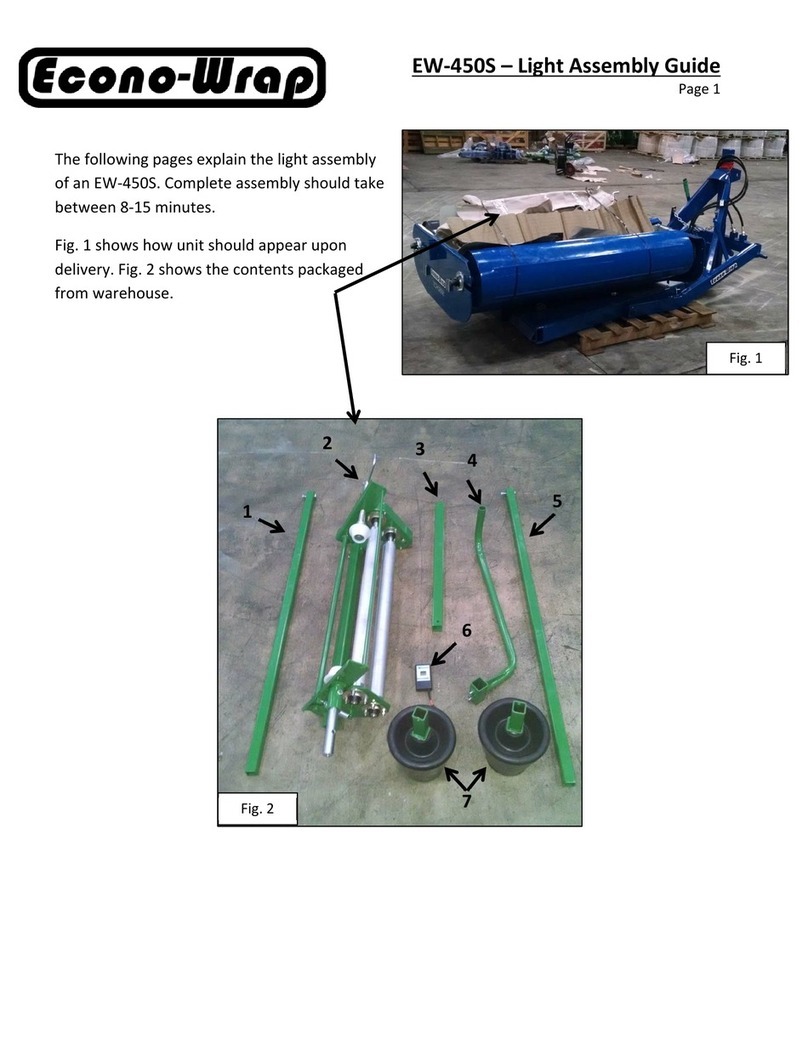
Econo-Wrap
Econo-Wrap EW-450S Light Assembly Guide

Landoll
Landoll 850 FINISHOLL Series Operator's manual
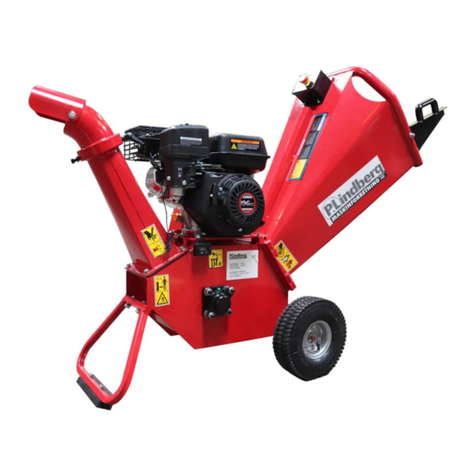
P.Lindberg
P.Lindberg 9060752 Original manual
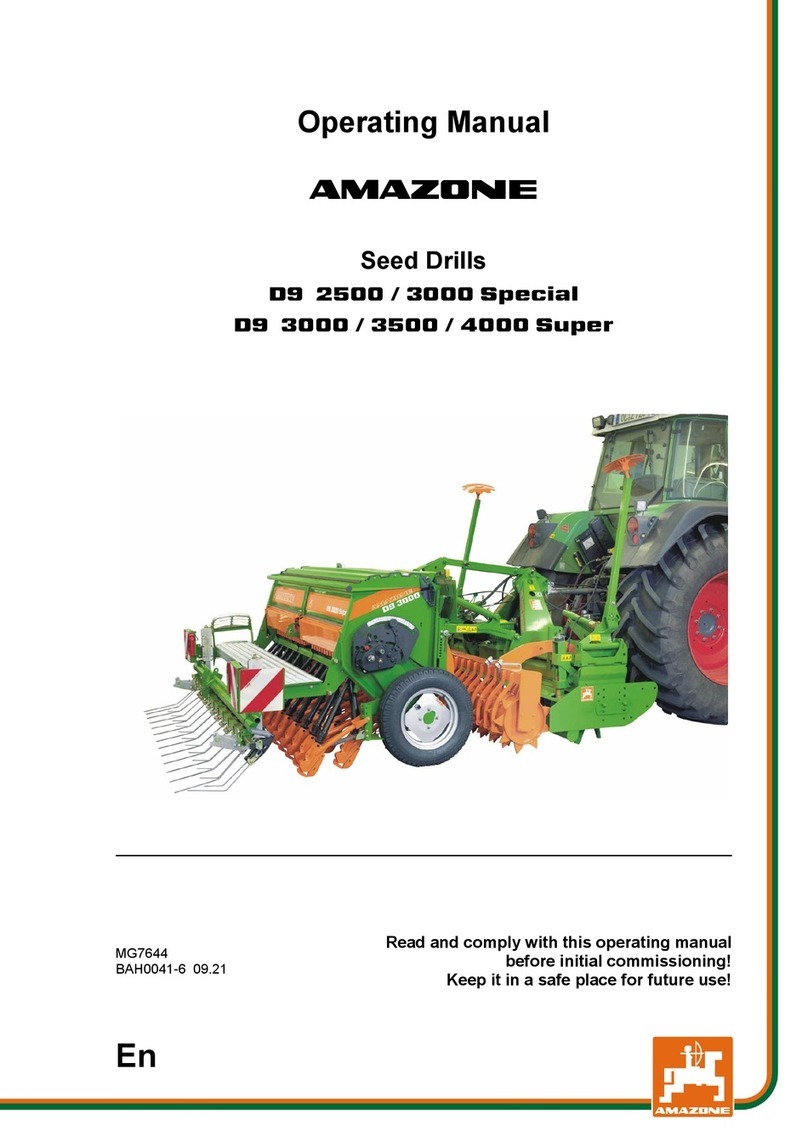
Amazone
Amazone D9 2500 Special operating manual
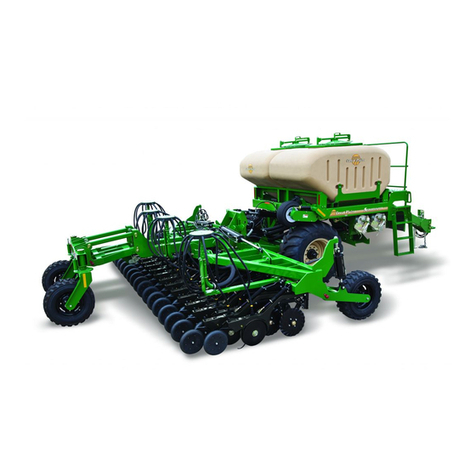
GREAT PLAINS
GREAT PLAINS Spartan II 607 Series Predelivery Manual
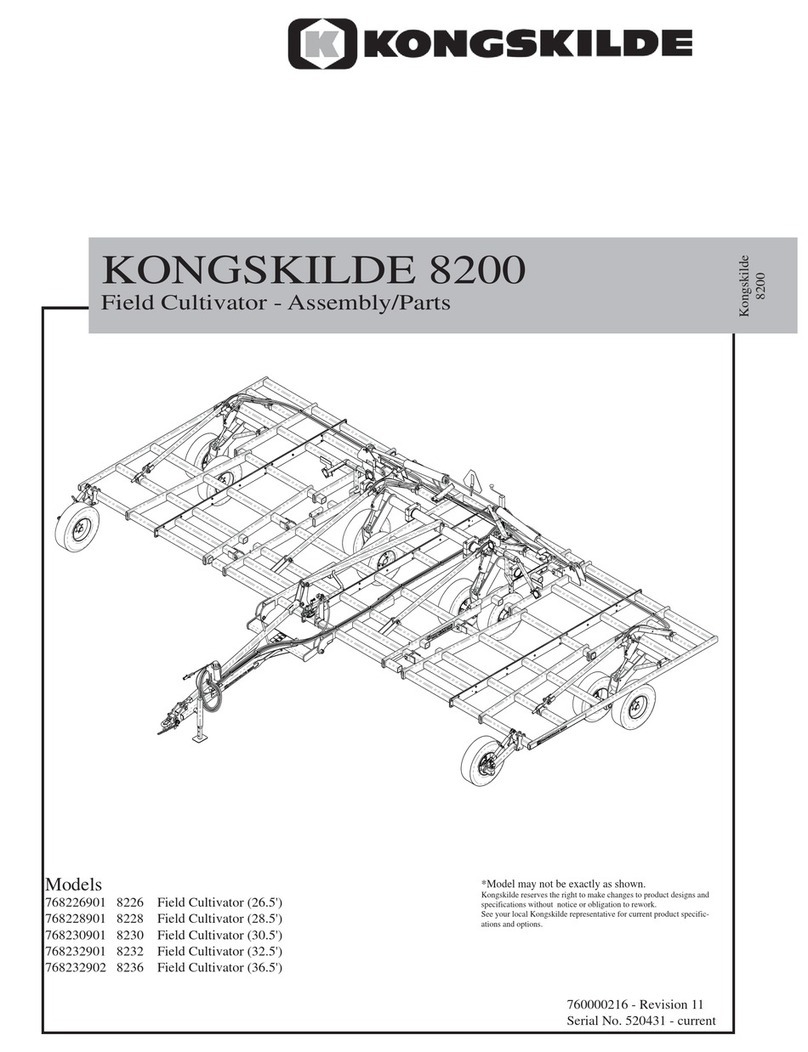
Kongskilde
Kongskilde 8200 Series Assembly / Parts

